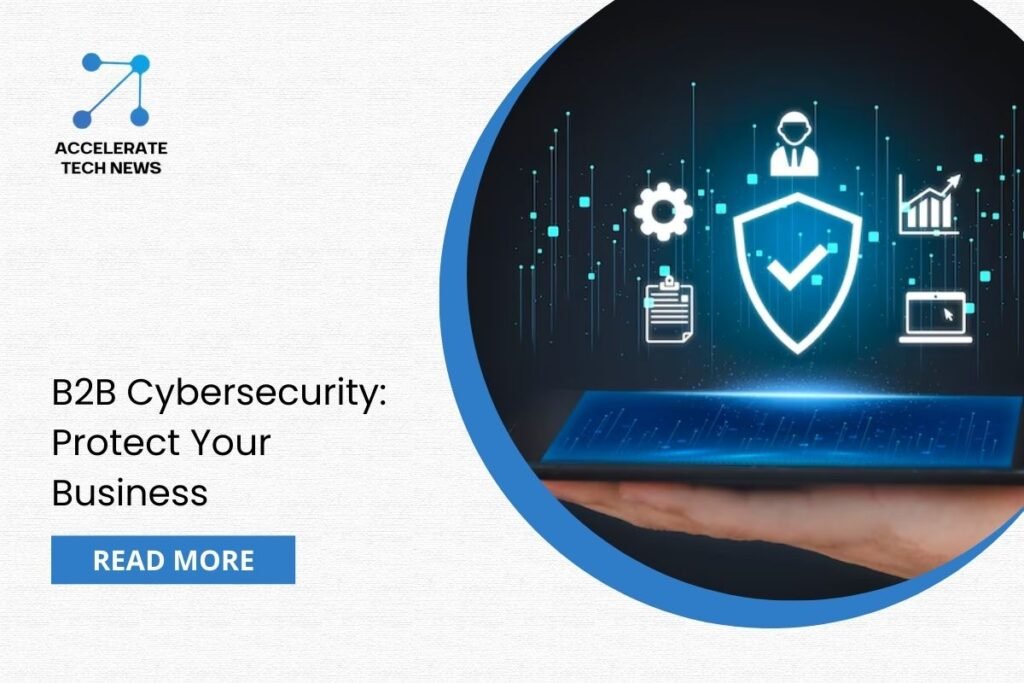
In today’s fast-evolving digital landscape, B2B cybersecurity is essential for protecting businesses from cyber threats. As companies increasingly rely on technology, they face risks like data breaches and cyberattacks. This guide will explain what B2B cybersecurity is, why it matters, and how to effectively protect your business.
What is B2B Cybersecurity?
B2B cybersecurity encompasses the measures businesses take to secure their data and systems against cyber threats, focusing on protecting sensitive information exchanged between businesses, such as customer data and financial records.
Why Cybersecurity is Important for Businesses
Implementing cybersecurity best practices is crucial for several reasons:
- Protects Sensitive Data: Safeguards important information from unauthorized access.
- Ensures Compliance: Helps avoid fines by adhering to industry regulations around data protection.
- Builds Customer Trust: Demonstrates a commitment to cybersecurity, enhancing trust with customers.
- Maintains Smooth Operations: Prevents downtime caused by cyber incidents, keeping operations running.
Key Parts of B2B Cybersecurity
To build a strong cybersecurity plan, focus on these essential areas:
Data Encryption
Data encryption converts sensitive information into a code, ensuring only authorized individuals can access it. This protects data during storage and transmission.
Benefits of Data Encryption:
- Safeguards sensitive information.
- Meets legal data protection requirements.
- Reduces the risk of data breaches.
Network Security
Network security involves safeguarding your network’s integrity and data through firewalls, intrusion detection systems, and secure access methods.
Key Practices for Network Security:
- Use firewalls to monitor network traffic.
- Implement Virtual Private Networks (VPNs) for secure remote access.
- Regularly update software to address vulnerabilities.
Access Control
Access control limits data access to authorized users by setting permissions based on roles.
Strategies for Effective Access Control:
- Use role-based access controls (RBAC) to restrict permissions.
- Implement multi-factor authentication (MFA) for additional security.
- Regularly review access permissions.
Threat Intelligence
Threat intelligence involves gathering and analyzing information about potential threats to anticipate and mitigate risks.
How to Use Threat Intelligence:
- Subscribe to threat intelligence services for regular updates.
- Analyze past incidents to identify risk patterns.
- Share threat information with industry peers.
Common Challenges in B2B Cybersecurity
Businesses often face obstacles when implementing cybersecurity measures:
- Lack of Awareness: Employees may be unfamiliar with cybersecurity risks.
- Budget Constraints: Limited funds make it difficult to invest in necessary tools or training.
- Rapid Technology Changes: Keeping pace with new technologies and threats is challenging.
- Integration Issues: Security tools may not integrate seamlessly with existing systems.
Best Practices for B2B Cybersecurity
To protect your business effectively, consider these cybersecurity best practices:
Cybersecurity Risk Management
A robust cybersecurity risk management strategy helps identify and address vulnerabilities.
Steps for Effective Risk Management:
- Identify Assets: List critical assets like hardware and data.
- Assess Vulnerabilities: Conduct assessments to pinpoint system weaknesses.
- Implement Controls: Reduce risks with appropriate policies and technical measures.
Cloud Security Solutions
As more companies move operations to the cloud, cloud security solutions help protect data in cloud environments from unauthorized access or breaches.
Key Cloud Security Practices:
- Use encryption for cloud-stored data.
- Implement strong access controls for cloud applications.
- Regularly monitor cloud environments for suspicious activity.
Incident Response Planning
A clear incident response plan is crucial for minimizing damage during cyber incidents.
Components of an Incident Response Plan:
- Preparation: Assemble a response team and define roles.
- Detection and Analysis: Use monitoring tools to quickly identify incidents.
- Containment, Eradication, Recovery: Plan steps to contain breaches and restore systems.
- Post-Incident Review: Review incidents to improve future responses.
Malware Detection Systems
Investing in effective malware detection systems helps detect and neutralize threats before they cause harm.
Best Practices for Malware Detection:
- Use reputable antivirus software for real-time protection.
- Regularly update malware definitions.
- Conduct routine scans of all network-connected devices.
Conclusion
In conclusion, B2B cybersecurity is vital in today’s digital environment. By prioritizing data encryption, network security, access control, and threat intelligence, businesses can create a strong cybersecurity framework that protects valuable assets. Addressing challenges like limited awareness or budget constraints is essential, which can be achieved through employee training and developing comprehensive risk management strategies.